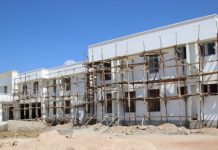Author: DATIVA MINJA
AfricaPress-Tanzania: TANZANIA National Roads Agency (Tanroads) will relocate the Dar es Salaam Rapid Transit (DART) main depot to Ubungo Bus Terminal to pave the way for redesigning the flood-prone Msimbazi valley, it has been revealed.
Relocation of the DART depot is also part of the measures to check flood- related effects at the Jangwani section along Morogoro Road.
The notorious Jangwani section has all along been frequently hit by severe floods leading to suspension of transport services, especially the dependable Bus Rapid Transit (BRT), which began its services in 2016.
The DART depot has remained idle after severe floods ravaged the place with muddy mounds filling service bays.
Tanroads Chief Executive Officer Eng Patrick Mfugale said in an exclusive interview that most of the flood- related problems were to a large extent due to waterways’ invasion by the public.
He said invasion of road infrastructure has been causing problems, especially when it rains, thus leading to suspension of transport services.
“You can see how it becomes problematic when people invade infrastructure especially in valleys and rivers,” he noted.
Relocation of the multi-billion shillings depot, Eng Mfugale said, will give room for Msimbazi Opportunity Plan to carry out a project which envisages to redesign the Msimbazi River to provide solutions on regular floods at the area.
Under Msimbazi Opportunity Plan, the arrangement seeks to take on board four strategies – mitigate, protect, transform and govern.
Mitigate strategy aims to reduce the flood hazard itself while under protection strategy the goal aims to reduce the people, properties and vital infrastructure that are exposed to the flood hazard.
Under the transformation strategy, the goal is to convert the most flood-prone areas of the valley into a City Park and redevelop surrounding neighbourhoods.
Under the aspect of governing the plan, the aim is to nurture a planned and coordinated process for urban development and ecosystem restoration in the Msimbazi Basin, and thus stop the current uncontrolled urbanisation process that results in increased flooding.
“DART project in the Jangwani depot was just a temporary facility as the Dar es Salaam City Council was searching for another area to set up a yard for its activities,” Eng Mfugale said.
He said after the relocation of the depot, the Jangwani area will be used for other project after conducting a study to find out how best the area can be utilised.
Tanroads has begun to design the Selander to Kigogo Sambusa drainage system, which is expected to be completed by the end of this month or mid-December this year.
“For us we see it is better to build one high bridge and drainage system from Selander to Kigogo Sambusa that can provide a permanent solution to the problem,” he said.
The ambitious project is funded by the World Bank although the Dar es Salaam Metropolitan Development Project has a share but it is not enough.
Eng Mfugale said the Jangwani depot project was approved temporarily for 10 years only but initially the Fourth Phase President Jakaya Kikwete had refused to set up the depot in the area.
The plan to relocate the DART main depot to Ubungo Bus Terminal came amid the completion of the new upcountry bus terminal at Mbezi Luis on the outskirt of Dar es Salaam.
According to Dar es Salaam Regional Commissioner Aboubakar Kunenge, the new bus terminal, set for operation at the end of this month, will accommodate about 3,430 buses per day.
The latest report titled Flooding in East Africa: The impacts on and implications for cities in East Africa, with a case study of Dar es Salaam, indicates that the cost of floods grows every year and the effects are felt by all citizens to varying degrees.
It said vulnerable populations are particularly at risk as their homes are often built on available land in flood plains and they have limited financial resources to recover from.
The report cautions that if flood risk is not addressed, it will continue to drain cities’ financial resources and endanger lives and livelihoods.







